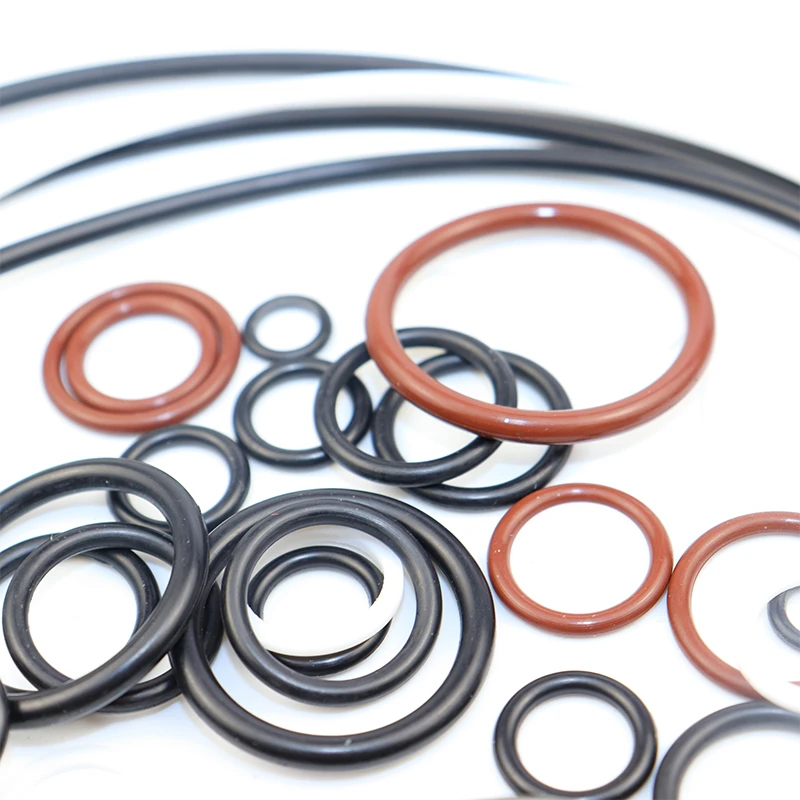දෙසැ. . 10, 2024 02:32 Back to list
Understanding the Importance of Rotary Oil Seals in Machinery Performance
Understanding Rotary Oil Seals Functions, Types, and Applications
Rotary oil seals, also known as radial shaft seals or grease seals, play a crucial role in various machinery and equipment. Their primary function is to prevent the leakage of fluids while simultaneously keeping dirt and contaminants out. In this article, we will explore the design, types, functions, and applications of rotary oil seals, emphasizing their importance in maintaining the efficiency and longevity of mechanical systems.
What are Rotary Oil Seals?
Rotary oil seals are sealing devices that are installed in machinery where a rotating part is present, which often includes shafts and spindles. These seals are crafted from high-quality materials such as elastomers, thermoplastics, or metal to withstand the operating conditions of the specific application. A rotary oil seal typically consists of a sealing lip that forms a dynamic seal against the rotating surface.
Functions of Rotary Oil Seals
1. Fluid Retention The essential function of rotary oil seals is to retain oil or grease within a mechanical assembly. This prevents the lubricant from escaping, which is vital for the smooth functioning of moving parts. 2. Contaminant Exclusion These seals effectively exclude dirt, dust, and other contaminants that can lead to wear and tear, enhancing the reliability and durability of machinery.
3. Pressure Maintenance In many applications, rotary oil seals help maintain the internal pressure of a lubrication system, further improving performance and efficiency.
Types of Rotary Oil Seals
There are various types of rotary oil seals, each designed for specific applications and conditions
1. Single Lip Seals These are the most commonly used seals. They consist of a single sealing lip that makes contact with the rotating shaft, offering reasonable sealing performance for many applications.
2. Double Lip Seals These seals have two sealing lips, providing enhanced retention of lubrication and improved exclusion of contaminants.
3. Spring-loaded Seals Incorporating a spring on the sealing lip helps to maintain constant contact with the shaft, compensating for wear and providing better sealing over time.
4. Specialized Seals For harsh environments or high-speed applications, specialized rotary oil seals are designed with advanced materials and constructions, such as fluorocarbon or ceramic.
rotary oil seals

Material Considerations
The materials used in manufacturing rotary oil seals are critical to their performance. Common materials include
- Nitrile Rubber (NBR) Ideal for oil and moderate temperature ranges, making it a popular choice for many mechanical applications.
- Fluorocarbon (FKM) Provides excellent resistance to high temperatures and aggressive chemicals, suitable for more demanding conditions.
- Polyurethane Offers excellent abrasion resistance and is often used in applications exposed to wear and tear.
Applications of Rotary Oil Seals
Rotary oil seals are ubiquitous across various industries due to their versatility
1. Automotive Industry They are extensively used in engines, transmissions, and wheel bearings to control the flow of lubricants and protect against contaminants.
2. Industrial Machinery Many machines such as pumps, compressors, and gearboxes rely on rotary oil seals to ensure efficient operation.
3. Aerospace In aviation, rotary seals help maintain the integrity of high-performance engines and hydraulic systems.
4. Agricultural Equipment The harsh operating conditions of agricultural machinery necessitate durable seals to prevent oil leaks and protect against dirt.
Conclusion
In summary, rotary oil seals are essential components in the functioning of various machinery and equipment. Their ability to retain lubricants while preventing contaminants from entering is vital for the performance and longevity of mechanical systems. Different types of rotary oil seals are available to suit a wide range of applications, making them indispensable across multiple industries. By understanding their functions, types, and applications, engineers can choose the right rotary oil seals for their specific needs, thus enhancing operational efficiency and reducing maintenance costs. As technology progresses, the development of rotary oil seals continues to evolve, promising even better performance in the future.
-
Unlocking the Potential of Hydraulic Systems with Essential Sealing Solutions
NewsAug.06,2025
-
Unleash the Power of Your Hydraulic Systems with Our Premium Seal Kits
NewsAug.06,2025
-
Specialized Hydraulic Seal Kits for Breakers, Pistons, and Presses
NewsAug.06,2025
-
Revitalize Hydraulic Systems with Premium Repair and Seal Kits
NewsAug.06,2025
-
Fortify Your Cylinders with Premium Sealing Solutions
NewsAug.06,2025
-
Elevate Hydraulic System Reliability with Specialized Seal Kits
NewsAug.06,2025
-
TCN Oil Seal Metal Ring Reinforcement for Heavy Machinery
NewsJul.25,2025
Products categories
















